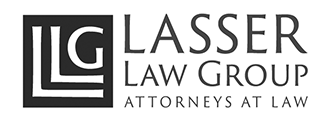In New York, the Yellowstone injunction is a form of legal relief used by commercial tenants who have been served with a notice to cure by their landlord to obtain an extension from a court to cure the default and prevent the landlord from terminating the lease until the dispute is settled or determined by the court.
The Yellowstone injunction takes its name from the landmark case National Stores, Inc. v. Yellowstone Shopping Center, 21 N.Y.2d 630 (1968). In National Stores, Inc., New York’s highest appeal court ruled that a commercial tenant, after receiving a notice to cure from its landlord, could seek a court injunction preventing the landlord from terminating its lease. Tenants have been filing applications for Yellowstone injunctions ever since.
Most lease defaults require a landlord to serve its tenant with a notice to cure. Generally, after the notice to cure expires, the landlord can then serve a notice terminating the tenant’s lease and then commence a summary eviction proceeding in civil landlord-tenant court which has limited jurisdiction and cannot issue a Yellowstone injunction extending the tenant’s time to cure. As a result, a tenant served with a notice to cure will often preemptively commence an action in the Supreme Court of the county where the property is located because the Supreme Court has the power to extend a tenant’s time to cure via a Yellowstone injunction (unlike the civil landlord-tenant court). County Supreme Courts routinely grant Yellowstone injunctions as long as the tenant can show it received a notice to cure and the time to cure has not expired (and provided there is a valid lease between the parties, and the tenant has expressed the desire and ability to cure the alleged default).
Once a Yellowstone injunction is granted, the tenant’s cure period will not run until the Supreme Court determines whether a default exists and often the cure period will be extended. If a tenant fails to file a Yellowstone injunction and the cure period expires, the tenant risks losing its lease in a civil landlord-tenant court proceeding because this court (unlike the Supreme Court) does not have the equitable power to extend the time to cure, and once a lease is terminated it generally cannot be revived. As a result, the Yellowstone injunction has been an important legal remedy used by tenants to challenge or extend the time to cure lease defaults without risking forfeiture of their lease.
However, recently, an appellate court ruled that a tenant which had a lease provision waiving its right to obtain a Yellowstone injunction could not extend or toll the time to cure its lease defaults for failure to obtain various permits and failure to allow sprinkler inspections by the FDNY. In 159 MP Corp. v. Redbridge Bedford, LLC, 71 N.Y.S.3d 87 (2nd Dept. 2018), the appellate court held that a commercial tenant’s waiver via a lease provision of the right to seek declaratory relief was legally enforceable, and by waiving its right to declaratory relief, the tenant also waived its right to seek a Yellowstone injunction. Further, the lease waiver language dictated that any dispute between the parties must be adjudicated in a summary eviction proceeding in civil landlord-tenant court.
The decision in 159 MP Corp. is significant because although many landlords have waiver provisions in their commercial leases similar to the waiver provision in the lease in 159 MP Corp., courts have been inconsistent in enforcing such provisions. Now, there is clear appellate law precedent making such Yellowstone waiver provisions binding and enforceable. This greatly enhances a landlord’s ability to enforce lease provisions and covenants such as requiring tenants to correct violations, complete alterations properly and maintain required insurance because, once a landlord serves a notice to cure, a tenant has a limited window to cure the default and, should it fail to do so, the tenant may have its lease terminated and then be evicted without the safety net of a Yellowstone injunction to fall back on.
As a result, it is advisable for landlords to include a provision in their leases waiving their tenants’ rights to seek declaratory relief and a Yellowstone injunction and, if a current lease does not have such a provision, it would be beneficial to add one in subsequent lease renewals. On the flip side, if you are representing a tenant, you should try to carve out some ability to obtain a Yellowstone injunction. Going forward, lease provisions affecting a tenant’s right to obtain a Yellowstone injunction will likely become one of the more focused on and important terms in commercial lease negotiations.
Get the LLG Real Estate Video Podcast and Quarterly Newsletter delivered to your inbox.


